As car owners, we can all agree that besides the smooth, loud, and exciting revving of a car, no other sort of noise or sound sounds nice coming from a vehicle. It can be more humiliating than anything to have to deal with a car that sounds like it will cough up a furball any moment. It can spoil your ride and make you worried about your car.
You would like your car to have that smooth and deep reverb rather than a high-pitched and sputtering sound. You will feel proud of your machine when it functions optimally. But, as we said, nothing is sadder than a sad sound from a beloved vehicle. Sputtering is not exclusive to just regular cars but pickup trucks as well.
So, regardless of your taste in cars or trucks, engine sputtering can be a menace. In trucks, sputtering during acceleration is an issue faced by many owners. Even some of the best trucks in the market, like the Ford F150, can also face this issue. So, if Your Ford F150 sputtering when accelerating, and to take care of your car the right way and make this sputtering sound disappear, we will have to understand why the sound is created and its causes! Before that, let us view what the F150 is all about.
Table of Contents
Ford F150: What Is It and Is It Good?
Various technical review forums rank the F 150 among their top pickup trucks. It fulfills all requisites of a full-size pickup truck. The F150 comes with choices in technical aspects. You can find the latest arrivals with engine types.
It is available in a 290-hp 3.3-liter V-6; a 400-hp 5.0-liter V-8; a 325-hp twin-turbocharged 2.7-liter V-6; a 400-hp twin-turbocharged 3.5-liter V-6; and a 250-hp 3.0-liter diesel V-6 etc. Regardless of the engine choice, you can also find this pickup truck in a 10-speed automatic transmission that allows hassle-free operation.
Ford has also introduced the new 400 hp hybrid powertrain variant recently. Such a hybrid pickup truck comes with a never-seen combination of a 400hp -3.5 liter/V-6 engine and a 35-kW motor combined with a 10-speed automatic transmission.
It claims to offer up to 700 miles of driving range with each tank. Together, the V6 engine and the 35kW motor can sufficiently power an onboard generator to sustain the power flow at the job sites. It can be a lifesaving feature during power outages as well. Ford also offers the F150 in the rear and four-wheel drive options that apply to all its available powertrains.
The four-wheel-drive hybrid powertrain can attain 60 mph in just 5.4 seconds.
The F150 is also available in different models based on its capabilities. You can find a high-spec model named King Ranch and an off-road capabilities model named Tremor. The King Ranch is known for easy-going handling accompanied by a variable-assist steering system. It is particularly useful in getting sharp responses at lower speeds that allow for an agile feeling drive.
The Tremor model, on the other hand, focuses on the most promising off road capability. It comes with 33-inch all-terrain tires and upgraded suspension. It also encompasses a locking rear differential and a four-wheel-drive transfer case that is similar to another high end- model, the F150 Raptor. The Tremor variant also offers a spectacular 60 mph in 5.3 seconds. Therefore, it trails the powerful Raptor just by a 0.1-second margin.
What Happens to Your Car While Accelerating?
Your car may reach from 0 to 60 in a couple of seconds. That tells how fast your car is moving in a particular direction.
The acceleration is nothing but a result of the systematic functioning of certain car features. Mainly, the throttle, engine, differential, and lastly, the tires together determine how fast your car will accelerate.
Let us now get a glimpse of the mechanics of an accelerating car. It will allow us to understand where the sputtering may arise and cause a hindrance.
When you step on the pedal, many forces come into action. All of that takes place in a systematic order. So, understanding them one by one is important, especially if your car sputters while accelerating.
Using Throttle
A throttle is nothing but a device that regulates the power supplied to the engine. So, it acts as a mechanism that manages the fuel flow to the engine fluid by either constricting the flow or obstructing it. You can regulate the power by restricting the inlet gases through the throttle. Therefore, the first step is to initiate this connection to accelerate the car or truck.
The throttle pedal connects you directly to your car engine. Once that happens, you can control the airflow towards the intake manifold.
The air gets mixed with fuel and then combusts after introducing a spark through spark plugs.
The combustion pushes the engine pistons and rotates the crankshaft. When you press the throttle pedal closer to the floor, more air suction occurs, and the same process takes place faster. As a result, you can hear your engine revving as you increase the crankshaft’s rpm.
Now, a sputtering engine would not give you the streamlined revving sound. Instead, it will give a popping sound that may indicate underlying issues.
Using Differential
We can understand the differential as a gear system. It allows the rotation of different wheels at different speeds on a particular axle.
The engine’s crankshaft has to be connected with the pistons for the rotation to happen. Otherwise, it will rev and create only noise, and the car will not accelerate.
A transmission is what bridges the gap here. It taps into the engine through an input shaft and essentially converts the engine speed to wheel speed. You can find the clutch or a torque converter present between the transmission and the engine.
So, if your car has a manual transmission, the clutch engages the engine from the transmission. On the other hand, a torque converter establishes the connection by using a turbine and a fluid-fed one-way stator in the automatic variants. Consequently, they both prevent the engine from stalling when kept idle.
At the end of the transmission, you will find the output shaft. It ultimately rotates the driveshaft and the wheels as well. In the middle of that, the gears, or in other words, the differentials, are present.
They are packed into the transmission casing and help boost or reduce the shaft’s torque. The torque is the rotational speed that makes your truck or car’s wheels move, and a gear of a specific diameter governs its increase or decrease.
If you experience sputtering, it may be due to the slipping engine-transmission connection.
Sputtering: What Is It?
Sputtering is a phenomenon in which your car produces a popping sound while you throttle or accelerate. Sometimes, it can also be audible while igniting the engine. Any car lover can distinguish this unpleasant sound. Instead of a smooth-revving, if your car makes a sputtering sound, that could indicate a serious underlying issue.
When your truck or car’s engine sputters, it simply means that the engine cannot achieve full combustion. Proper combustion is necessary in creating the necessary pressure that moves the piston. After which, the crankshaft will rotate. So incomplete combustion can cause sputtering, but it also signifies a complete wastage of fuel.
Engine sputtering could often indicate a small underlying mechanical issue. However, it would be wise not to sideline it ignorantly. It could also indicate the beginning of a more complicated problem.
Engine sputtering can be among the first symptoms of a fault in the engine or fuel system. Often, poor exhaust systems can also become the reason for it. The engine can also sputter if you run out of fuel, which is not a major issue. But, if your F150 sputters while accelerating and does not fall into any of the possibilities mentioned earlier, you need to consider other major reasons.
How it works
A sputtering engine may have its roots located in a handful of different units. The most common and usual components are the exhaust and the fuel ones.
The exhaust unit collects and holds exhaust gases emerging from the cylinder head with the help of an exhaust manifold whose primary role is to help funnel and divert harmful gases from the cylinders. After this, a front pipe releases these harmful gases and lets them find their way to the catalytic converter.
A catalytic converter proceeds to throw out or remove the toxic elements within the gases, namely Carbon Monoxide, and Hydrogen Monoxide, by converting them into inert gassy substances.
The gases leave the catalytic converter and are transported towards a muffler, which helps limit and maintains the noise levels of the internal components of the car, and lastly, the exhaust gases exit the car via the tailpipe.
The fuel system is responsible for storing and supplying fuel to the engine to drive the car. Fuel is combined and mixed air, which is atomized as well as vaporized. This process takes place in the engine intake system. The mixture of air and fuel is then compressed in the engine cylinder and ignited; this produces energy responsible for moving the pistons.
Now that we have understood how a car engine works, let’s look at the common and possible causes behind your car sputtering.
Main Reasons For Your Ford F150 Sputtering When Accelerating
Reason #1 – Leak in the exhaust manifold
A leak within the exhaust manifold, responsible for collecting gases, can make the engine perform erratically or even sputter. Such a situation can also lead to the “check engine” light turning on and produce increased engine noise and unsatisfactory performance from the engine.
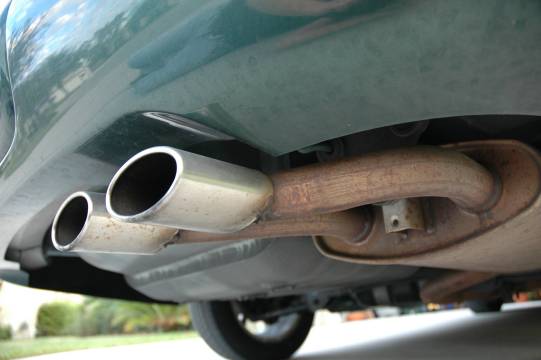
The exhaust manifold comes as the first exhaust element of the system. It collects the exhaust fumes and gases released from multiple engine cylinders into one pipe. The main purpose of an exhaust manifold is to direct the gases to the exhaust pipe through the catalytic converter. Since there is a continuous flow of heated fumes, they are made from cast iron alloys or stainless steel, which can withstand high temperatures.
It receives the air/fuel mixture from various cylinders of your truck’s engine. A failing exhaust manifold will cause incomplete combustion leading to sputtering.
In many cars, it also encases the first oxygen sensor of the system that monitors the oxygen levels entering the system. It guides the fuel injection system in increasing or decreasing the oxygen used in the fuel mixture. Therefore, it collects all of the engine’s emissions together, and once burnt completely, it pushes them to the exhaust pipe.
Exhaust manifolds are the first component to receive hot gases. Therefore, they are subject to high thermal stress. Continuous exposure to high temperatures can cause a significant expansion. When repeated cooling follows it, the material may get fatigued. As a result, the components can crack, break or fail overall. The additional vibrations can cause added stress that may lead to its damage.
A leaking or damaged exhaust manifold can lead to harmful driving conditions as the escaping chemical and hot gases can melt or damage the plastic and non-metal units. It can also lead to exhaust gases making their way inside the car via vents.
Solution: This is a relatively complex and serious issue; hence you need to consult your local mechanic at the earliest to prevent any further damage from occurring to the car’s components.
Reason #2 – Worn gaskets or seals
There are many seals and gaskets within the exhaust component, and in case any of them are failing to do their job, it can lead to a sputtering or rough engine.
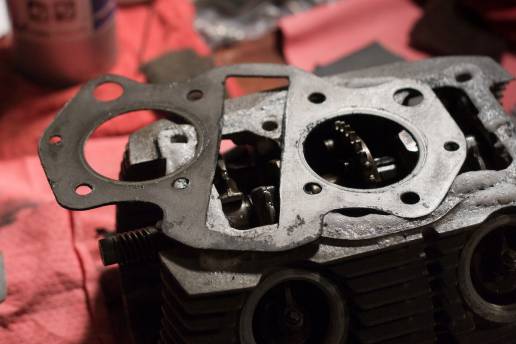
The Ford F150 uses either gasoline or diesel as the fuel for combustion. A gasket comes into play by sealing the engine block and the cylinder head during that combustion.
The main function is to seal the gases within the cylinders. As a result, you can avoid the scenario where coolant or engine oil leaks into the cylinders and hampers the combustion.
Worn gaskets would cause leaks, leading to poor engine running, overheating issues, or sputtering.
The engine mainly has three types of fluids that flow from the engine block and cylinder head. It includes combustion gases, water-based coolant, and lubricating engine oil.
For the engine to give you the smooth-revving and efficient operation, these fluids should not mix or leak into the junction of the engine block and cylinder head. The gasket acts as the barrier that prevents the same. However, Seals and gaskets wear down with time and require a replacement.
Neglecting them and failing to replace them on time can damage the exhaust manifold, leading to a much costlier repair.
Solution: To pinpoint which gasket or seal has been damaged, you need to acquire the help of your local mechanic. With the help of specific tools and skills, he will figure out the exact origin of the issue. Accordingly, you can invest in a pair of good-quality gaskets or seals based on your car’s make.
Reason #3 – Malfunctioned catalytic converter
If the engine is sputtering, has a stench of rotten eggs, or is running rough, it is most likely due to a failing or damaged catalytic converter. More often than not, this will signal and turn on the “check engine” indicator.
A catalytic converter is nothing but a device that controls exhaust emissions. It mainly converts toxic compounds such as sulfur and other pollutants present in the exhaust gas into less harmful pollutants. When the gases come from the engine into the converter, it subjects the gases to undergo a catalyzing redox reaction.
A catalyst chamber is used to convert harmful compounds into safe gases, like steam. The converter’s function is to split up the unsafe molecules in the gases produced by the truck or car to be treated before being released into the air.
You can find a catalytic converter on the underside of a vehicle. It appears like a large metal box with two pipes coming through it. Those pipes help the converter execute the process and the catalyst before expelling the gases through the exhaust pipe.
The gases come in from the input pipe that connects with the engine. The gases having the hydrocarbons are then passed through the catalyst, causing a chemical reaction. It breaks down the pollutants into lesser toxic gases that travel towards your car’s exhaust pipe through the second pipe.
When a converter begins to break down, it cannot combust the hydrocarbons present within the exhaust unit and is unable to deconstruct the sulfur that an engine generates. This produces a pungent rotten smell.
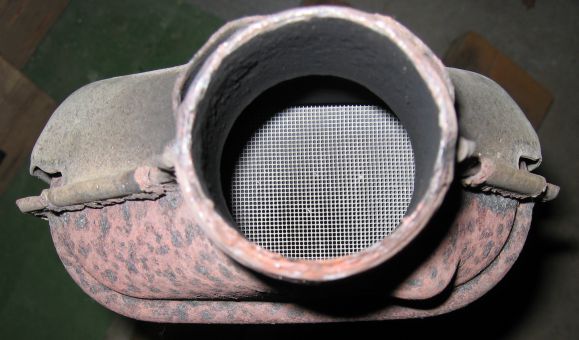
With time and further neglect, your car might refuse to start altogether as there might be a severe blockage within the catalytic converter.
Solution: If you are uncomfortable with your knowledge about cars and would rather have professionals take care of it, you should call your local mechanic to unclog the catalytic converter with an Oxygen Sensor and Catalytic Converter Cleaner. If you’re comfortable with it, you can purchase a catalytic converter cleaner and pour it into the fuel tank.
You need to refer to the owner’s manual to figure out the exact amount that needs to be poured. After this, you can take your car for a drive and let it clear out.
Reason #4 – Malfunctioned or Damaged Oxygen Sensors
An Oxygen sensor is a concentration sensing device that measures the residual oxygen content of the emitted gases. One sensor is incorporated before the catalytic converter in most modern cars like F150. And you can find another within the exhaust manifold. However, the maximum number can vary according to the engine’s efficiency.
Oxygen is mixed with the fuel for better ignition. The oxygen sensor checks the oxygen amount within the exhaust, which is residual. It communicates the information using a voltage signal. So, it allows the car’s computer to know the oxygen status in the exhaust. Therefore, your vehicle’s computer utilizes this information to modify the quantity of fuel that entered into the engine.
An oxygen sensor’s primary role is to calculate exactly how rich or lean is the mixture of the gases being emitted from the exhaust as they are expelled through the car’s combustion chamber.
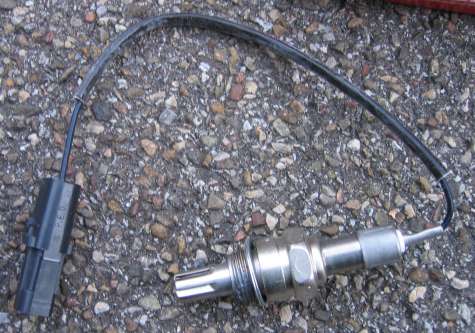
An unclean or damaged sensor either puts too little or either too much fuel into the engine leading it to sputter and run rough. It is essential to note that oxygen sensors should be replaced or changed regularly.
Solution: Usually, if an oxygen sensor is not functioning correctly or has gotten damaged, the only solution is to replace it with a new one. You should consult your local mechanic as he would be able to tell you what the issue is with your oxygen sensors and help you buy the suitable oxygen sensors for your car according to its make and model.
Reason #5 – Dirty or Clogged Fuel Injectors
The introduction of fuel into the engine’s cylinders takes place through fuel injection. It takes place using a pump rather than a suction produced by the piston’s movement. If you have a diesel variant of the F150, it may not use spark plugs to ignite the sprayed fuel. Instead, it relies on the heat that the compressed air in the cylinders creates for ignition.
On the other hand, engines that utilize spark ignition use fuel injectors instead of conventional carburetors.
With the help of fuel injection, the fuel gets more evenly distributed to the individual cylinders. It is more productive than the carburetor system. As a result, the vehicle can develop more power and reduce unwanted emissions.
The primary role of the fuel injector is to throw fuel into the cylinders, after which it is mixed with air and ignited. The fuel injector nozzles can collect dirt and become clogged with time and usage, leading to a sputtering or rough engine, slow acceleration, and the car not receiving any power. Therefore, if your F150 has not been replaced with a new fuel injector and a long time has passed since you cleaned it, that could cause sputtering.
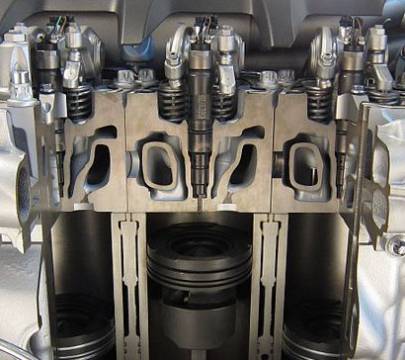
Fuel injectors can be cleaned quite thoroughly if the issue is noticed and caught early, but the injectors might require a replacement if neglected.
Solution: To have your fuel injectors thoroughly cleaned to avoid any further damage, it is best advised to consult your local mechanic for this procedure. It is a tedious experience and would be done aptly by a professional using suitable cleaning fluid and materials.
Reason #6 – Contaminated MAF Sensor
The MAF sensor expands as a Mass Air Flow sensor. As the name signifies, it determines the mass flow rate of air that goes inside the engine.
The primary role of the MAF sensor is to calculate the amount of air being allowed to enter inside the fuel injection component. The Engine Control Unit (ECU) delivers the right fuel mass by calculating the air mass information.
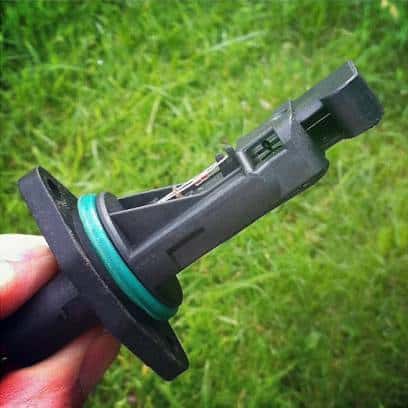
Air can change its density with temperature and pressure variations. In automotive applications, it can change with the ambient temperature and altitude of the terrain in which your F150 travels. However, it can also change with the use of forced induction.
The Mass Flow Sensors offer better technology than other sensors. The MAF sensors are more appropriate as they can determine the air intake quantity within each cylinder.
You can find two types of MAF sensors commonly used with modern combustion engines: The Vane meter and Hotwire. However, none of the two measures the air mass directly. Therefore, the Engine Control Unit or ECU must utilize additional sensors and their inputs to determine the mass flow rate of the air your engine intakes accurately.
It calculates and sends the required information to the car’s computer to deliver an appropriate quantity of fuel into the combustion chamber. Usually, contaminated mass airflow sensors send incorrect information to the computer, resulting in a sputtering engine.
Solution: You would need to remove the sensor from the car to clean it thoroughly and properly. It is best advised to acquire the help of your local mechanic for this procedure as you might have to deal with some parts and wires that you have no idea about.
Reason #7 – Fault in The Sparkplugs
A spark plug is an electric current delivering device. It delivers that from an ignition system which then passes to the combustion chamber of a modern spark-ignited engine. The passing current creates a spark that ignites the compressed fuel/air mixture.
A spark plug consists of a threaded metal shell electrically separated from a central electrode. A ceramic insulator helps in isolating that.
Spark plugs provide the required ignition for the air/fuel mixture and help initiate the combustion.
But these plugs can wear out and stop their functioning as you intend them to. If that happens, there may be a lot of unburnt fuel, leading to engine sputter. If your F150 has not had a replacement in a long time, that may cause its sputter.
Solution: You can remove and replace the spark plugs yourself if you find them dirty or damaged; otherwise, they can cause similar issues.
Reason #8 – Clogged Fuel Filter
The filter’s primary role is to filter the fuel entering the fuel injectors. If your F150 operates with a clogged fuel filter, it can cause the engine to receive a reduced fuel pressure. That can cause an engine sputter, or in another case, it can also block the fuel injector.
Solution: You must replace the clogged fuel filter after scheduling a session with your mechanic. It may need a replacement if your car has not been serviced for a while. Fuel filters are not costly, and hence their replacement won’t be heavy on your pockets.
Reason #9 -Inlet Manifold Leak
In contrast to the exhaust manifold, the inlet or intake manifold evenly distributes the combustion mixture. It distributed the mixture in each intake port.
If your intake manifold encounters a leak, that may result in an extremely lean mixture causing your car engine to sputter.
Solution: You can use an EVAP smoke machine to detect any leak in the manifold. If high-pitched noises are coming from around the engine, that may indicate the same. Spraying soap near the intake hoses can also help you detect the leak. Once you confirm a leak, consult your mechanic to fix it.
Faqs
Why Does Your Ford F150 Sputter?
The sputtering can be because of various reasons, from a clogged fuel filter to a leak in the exhaust manifold could be the primary reason for it. So, you must inspect it and find out.
Is Sputtering a Sign of Damage?
Usually, sputtering can also arise if you run out of fuel, so it depends on the cause of the sputter. Most of the underlying issues regarding sputtering are not very damaging and can be easily fixed.
Is Fixing a Sputter Expensive?
Not usually. But you need to detect the cause in time and do the needful to avoid a greater expense.
Conclusion
If you notice the slightest chance of sputtering in your car, it is time to get it checked out. Usually, the sputtering does not pose an immediate threat to your vehicle, but it can ruin the components it is originating from quite quickly if left neglected.
The leading causes for a sputtering engine or rough engine are worn-out gaskets and seals, dirty air flow mass sensor, a leak in the exhaust manifold, damaged catalytic converter, or damaged oxygen sensors. Thankfully, all of the issues related to all these parts c.
